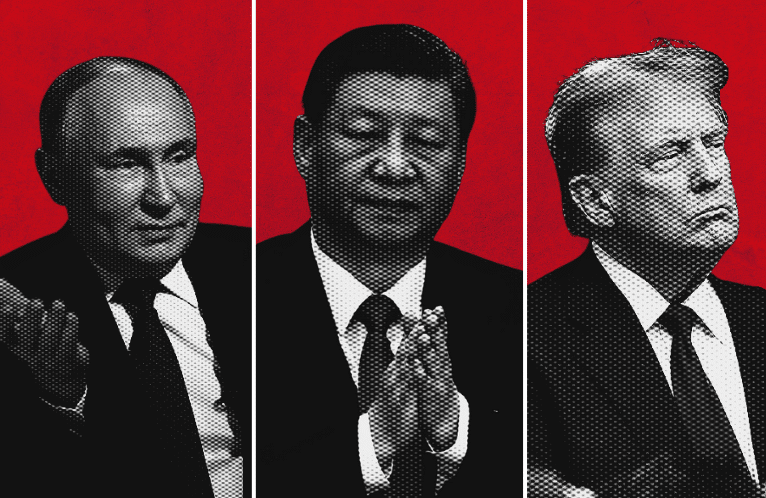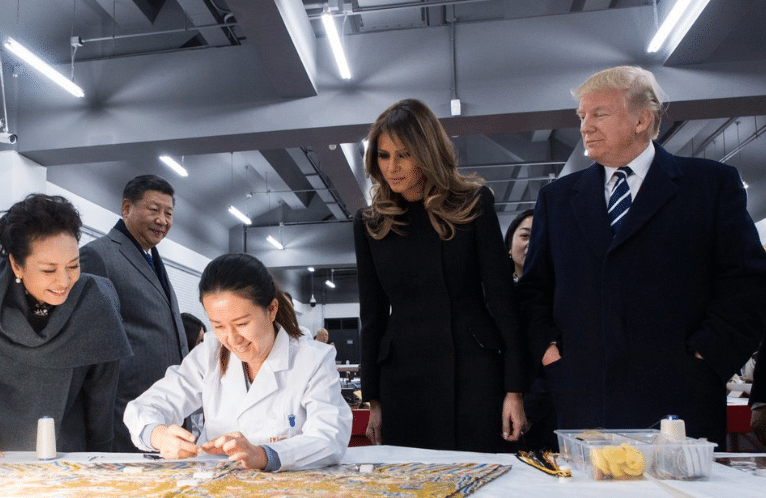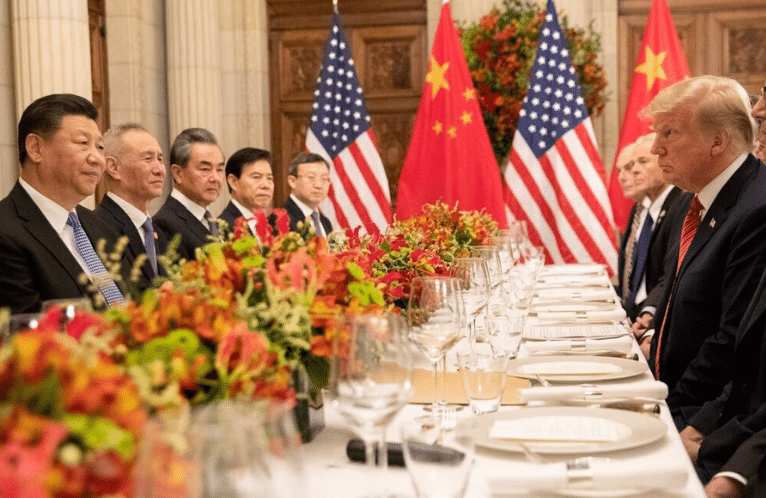Who Gets to Wear a Cheongsam?: The Politics Of Cultural Appropriation Get More Complicated When You’re Mixed-Race, Like Me
The last time I wore a cheongsam, a classmate I’d never spoken to asked what a Mexican girl like me was doing appropriating her culture on Chinese New Year. At 16, I was already used to fielding questions about my identity — but I was taken aback by the accusation. I explained to her that I was biracial, that my mom was from Hong Kong and immigrated to the U.S. in the 1970s. “There’s no way you’re Chinese,” she said. “You don’t look it at all.”
We were both volunteering at a high school luncheon for the Chinese Parents’ Association, and a few people turned to look and listen. I was wearing my favorite cheongsam: a sheer black dress covered in colorful embroidery layered over a simple black slip. Normally, the garment made me feel powerful, but suddenly, I felt self-conscious.
The girl continued to berate me, asking why I would lie about my ethnicity when I was so obviously Latina. I tried to explain that, contrary to her opinion, I was half Chinese and half mostly Italian.
“Well, either you’re adopted or someone’s been lying to you, because you’re definitely not Chinese,” she said.
I haven’t worn a cheongsam since.
While it wasn’t the first time someone doubted my ethnicity, before then, it hadn’t occurred to me I might not be considered “authentic” enough to be Chinese. I began to bargain with myself. At the time, I was reasonably fluent in Mandarin and had been to China multiple times. My mom had sent me to Saturday school as a kid and to language immersion classes as a teenager. Was I not entitled to wear a cheongsam because I was “diluted” by my whiteness?
Aesthetically, few things feel as representative of Chinese culture: Also known as a qipao, the cheongsam is a traditional garment that dates to the Qing Dynasty, but some argue that its roots extend back even further. Made of silk or cotton, it was originally just the female version of the changshan, a long shirt worn by men around the same time. As a recent exhibit at the Museum of Chinese in America on Shanghai style explains, women chose to wear the cheongsam “because they wanted to look more like men.” It was symbolic of the move toward gender equality in China.
A more slender fit became popular in the 1920s, with the long, form-fitting dress rising to prominence for its implications of wealth, eventually permeating other social classes and becoming China’s national dress in 1929. At the height of its popularity, the cheongsam was worn for both casual and formal occasions, and beloved by celebrities and socialites alike.
Nowadays, the cheongsam is more a nod to tradition than an everyday outfit. When I asked my mom about her experience with the dress, she explained that its only real value lies in what it symbolizes.
“It’s not that comfortable, so obviously with the rise of Western influence in China, people stopped wearing it,” she told me. “But on certain occasions, the older generations would wear it for more formal and respectable reasons. And the younger generations would wear it because they liked the idea that it’s traditional.”
“I made you wear it for the same reason: It’s important to get the younger generations to take part,” she said. “You do it to show you’re proud of your culture. I wore my mom’s to honor her, and it tickled me that I could fit into it — even though the neck was so tight it was choking me.”
Asphyxiation aside, it’s also not particularly easy to procure one. As my mom explained, it’s incredibly difficult to make a cheongsam because of its shape and the way it tapers at the waist. The garment is restrictive and near impossible to move in — but it takes a lot of skill to make something so beautifully constricting. While you can technically buy a cheongsam off the rack, an authentic one is tailor-made. It’s designed to fit the wearer perfectly at the waist, using darts to seamlessly hold its form.
Today, the few remaining expert tailors tend to work in-house for the mega-rich families that can afford them. Because of this, hand-me-down cheongsams have become extra precious. Meanwhile, mine continues to gather dust in the back of my closet. Rather than fight the notion that I must fulfill certain requirements in order to be “authentically” Chinese, I’ve instead found myself believing it. The prospect of wearing a cheongsam has become a source of anxiety and shame: Simply put, I don’t feel worthy.
I’m not alone in feeling this. And luckily, my fellow mixed-race compatriots are actually fighting back. Last month, model Gigi Hadid posted a photo to Instagram of herself with a few friends, showing off their henna-covered hands after a girls’ night in. At the end of the photo’s caption, she wrote, “[Before] you go all ‘cultural appropriation’ in the comments, check out the last name. Hadid. Half Palestinian & proud of it.”
The tone of her words was defiant and haughty — the language of someone used to defending her identity. Less than a week later, Chrissy Teigen began posting images from her cover shoot with Vogue Thailand, captioning the first, “So proud and honored to have shot the cover of Vogue Thailand! Special to me for so many reasons… one being I am SO PROUD to be Thai.” While not quite as defiant, her words felt just as familiar: Both chose to fight the authenticity trap by wholeheartedly embracing their “otherness.”
A major part of being mixed is the feeling that you must always announce what you are before someone else does it for you. It’s partly an exercise in self-preservation, and partly one of survival: If I can establish what I am in a stranger’s mind before they’ve had the chance to do it for me, I can finally take ownership of who I am.
Of course, clothing is an essential part of self-expression — and for mixed-race people, it can be a means of connecting with an identity often denied to us. But choosing to wear a culturally significant garment when you aren’t “passing” can also feel like a radical act of defiance.
As the psychologist Stephen Murphy-Shigematsu writes in When Half is Whole, a collection of nonfiction stories about the mixed-race Asian American experience, “These games of authenticity bring out our vulnerability, but I play them anyway, if I want to prove how Asian I am.” The choice to wear something culturally significant when you’re mixed-race becomes a gamble: Wearing a cheongsam both serves as “proof” of my authenticity and makes others more likely to question it.
In recent years, there’s been a rise in cultural appropriation policing, from the immediate backlash to Pharrell’s Elle UK cover, in which he wore a Native American headdress, to actress Amandla Stenberg’s kickass “Don’t Cash Crop My Cornrows” video in response to Kylie Jenner’s inappropriate hairstyle choice. These situations deserve to be called out. But while mostly contextual and warranted, the frequency of such call-outs have also fostered a pitchfork mentality that leaves little room for nuance. Like all forms of public shaming, being accused of cultural appropriation is painful and embarrassing — and when you belong to the culture you’re being accused of stealing, the shame becomes something much deeper.
At its worst, such policing is just another way of enforcing the authenticity trap. It’s tedious and exhausting, and those who challenge your identity are rarely looking for an answer so much as confirmation that they’ve guessed correctly. As a kid, my background felt like something that made me unique. As an adult, I’ve realized it’s just something that makes me different. In Thandie Newton’s 2011 TED Talk on embracing otherness, the biracial actress says that we are all born believing in a universal “sameness,” but that this idea is quickly taken from us as the world starts to label us based on our differences.
All too soon, she says, “our little portion of oneness is given a name, is told all kinds of things about itself; and these details, opinions, and ideas become facts, which go towards building ourselves, our identity.” The self we build, she argues, is thus “a projection based on other people’s projections.” The older I’ve become, the more these projections have come to define how I view and carry myself. This has in turn affected what I feel I can and can’t get away with when it comes to how I express my identity.
When you’re told multiple times that you aren’t enough (to “pass” or otherwise), you start to believe it. My former classmate was simply the breaking point that convinced me I wasn’t authentic enough to be seen and acknowledged as Chinese. To those who exist interstitially between cultures, outside acknowledgment becomes a confirmation of identity — something you desperately crave when you aren’t quite sure of it yourself. As Newton explains, “My self became defined by otherness, which meant that, in that social world, I didn’t really exist.”
Newton found escape from this through art: By pretending to be someone else, she could define her otherness for herself. But for those of us who are less capable (i.e., less ridiculously talented at acting), the path toward empowerment and acceptance is trickier to navigate.
I have always been proud of my otherness, insofar as it might, at least in this context, be defined as “non-whiteness.” I grew up in a single-parent household with a Chinese immigrant mother. The majority of her family is still in Hong Kong, a place where I’ve spent countless sticky summers covered in mosquito bites and stuffed with dim sum.
But to be mixed-race is to always be the outlier, even in your own family: the one weird little clan of humans with whom you’re supposed to fit. My family has always called megui lo or gui mui. When I was younger, my mom told me it meant “ghost child.” In reality, it means “foreign devil.” I’m still trying to figure out where this leaves me.
As someone who’s biracial, I will always exist in the in-between. But all of us, regardless of race, will face doubt and denial for who we are. Rather than let others dictate the boundaries of our authenticity, we should instead seek to define it for ourselves. Authenticity is an active choice — and for some of us, it can be as simple or as radical as the clothes we choose to wear.
By GINA MEI Jan. 26, 2016 on Racked.com
Read more here








